Ghena Hammour
A Deep Matched Filter For R-Peak Detection in Ear-ECG
May 23, 2023Abstract:The Ear-ECG provides a continuous Lead I electrocardiogram (ECG) by measuring the potential difference related to heart activity using electrodes that can be embedded within earphones. The significant increase in wearability and comfort afforded by Ear-ECG is often accompanied by a corresponding degradation in signal quality - a common obstacle that is shared by most wearable technologies. We aim to resolve this issue by introducing a Deep Matched Filter (Deep-MF) for the highly accurate detection of R-peaks in wearable ECG, thus enhancing the utility of Ear-ECG in real-world scenarios. The Deep-MF consists of an encoder stage (trained as part of an encoder-decoder module to reproduce ground truth ECG), and an R-peak classifier stage. Through its operation as a Matched Filter, the encoder searches for matches with an ECG template pattern in the input signal, prior to filtering the matches with the subsequent convolutional layers and selecting peaks corresponding to true ECG matches. The so condensed latent representation of R-peak information is then fed into a simple R-peak classifier, of which the output provides precise R-peak locations. The proposed Deep Matched Filter is evaluated using leave-one-subject-out cross validation over 36 subjects with an age range of 18-75, with the Deep-MF outperforming existing algorithms for R-peak detection in noisy ECG. The Deep-MF achieves a median R-peak recall of 94.9\%, a median precision of 91.2\% and an (AUC) value of 0.97. Furthermore, we demonstrate that the Deep Matched Filter algorithm not only retains the initialised ECG kernel structure during the training process, but also amplifies portions of the ECG which it deems most valuable. Overall, the Deep Matched Filter serves as a valuable step forward for the real-world functionality of Ear-ECG and, through its explainable operation, the acceptance of deep learning models in e-health.
An Apparatus for the Simulation of Breathing Disorders: Physically Meaningful Generation of Surrogate Data
Sep 14, 2021
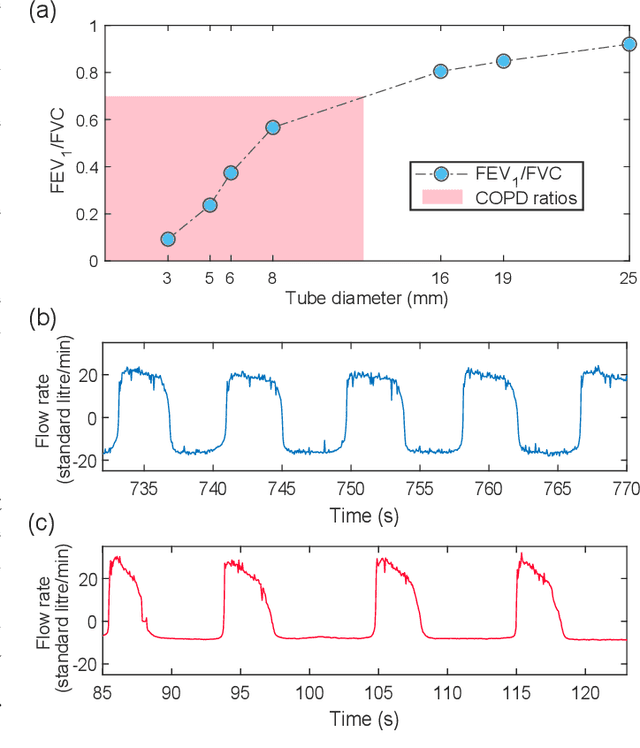
Abstract:Whilst debilitating breathing disorders, such as chronic obstructive pulmonary disease (COPD), are rapidly increasing in prevalence, we witness a continued integration of artificial intelligence into healthcare. While this promises improved detection and monitoring of breathing disorders, AI techniques are "data hungry" which highlights the importance of generating physically meaningful surrogate data. Such domain knowledge aware surrogates would enable both an improved understanding of respiratory waveform changes with different breathing disorders and different severities, and enhance the training of machine learning algorithms. To this end, we introduce an apparatus comprising of PVC tubes and 3D printed parts as a simple yet effective method of simulating both obstructive and restrictive respiratory waveforms in healthy subjects. Independent control over both inspiratory and expiratory resistances allows for the simulation of obstructive breathing disorders through the whole spectrum of FEV1/FVC spirometry ratios (used to classify COPD), ranging from healthy values to values seen in severe chronic obstructive pulmonary disease. Moreover, waveform characteristics of breathing disorders, such as a change in inspiratory duty cycle or peak flow are also observed in the waveforms resulting from use of the artificial breathing disorder simulation apparatus. Overall, the proposed apparatus provides us with a simple, effective and physically meaningful way to generate surrogate breathing disorder waveforms, a prerequisite for the use of artificial intelligence in respiratory health.
In-Ear SpO2 for Classification of Cognitive Workload
Jan 03, 2021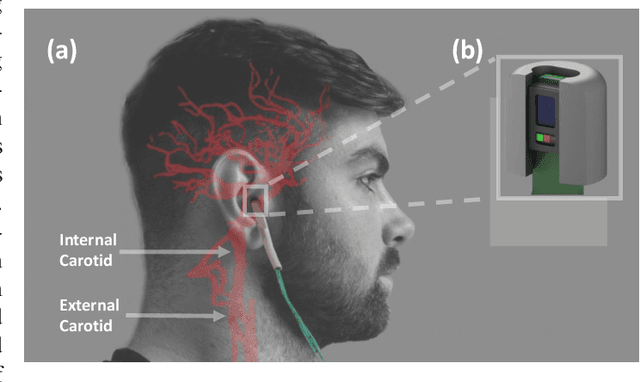
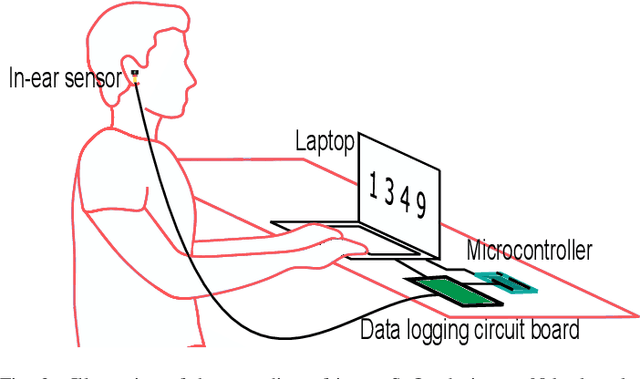
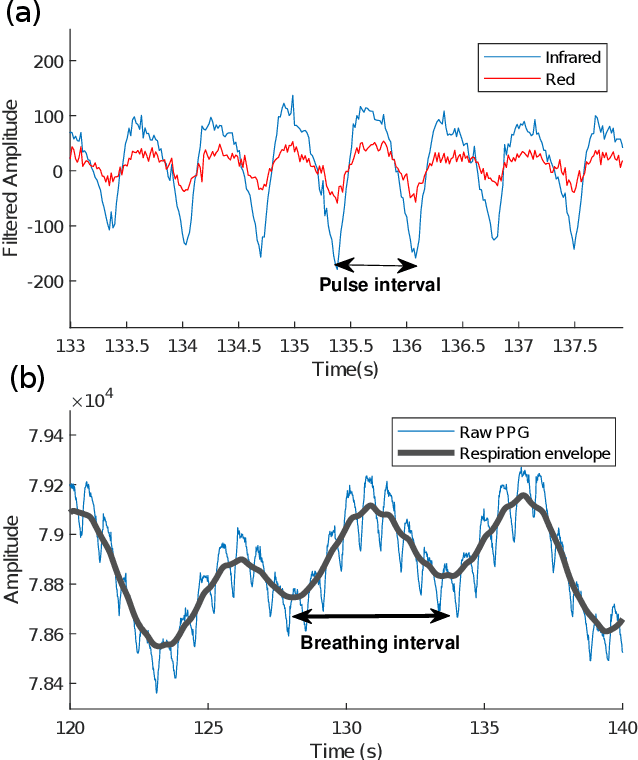
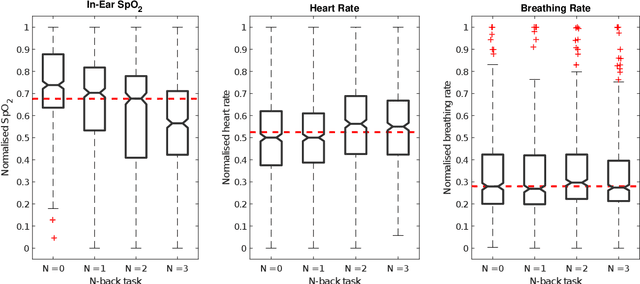
Abstract:Classification of cognitive workload promises immense benefit in diverse areas ranging from driver safety to augmenting human capability through closed loop brain computer interface. The brain is the most metabolically active organ in the body and increases its metabolic activity and thus oxygen consumption with increasing cognitive demand. In this study, we explore the feasibility of in-ear SpO2 cognitive workload tracking. To this end, we preform cognitive workload assessment in 8 subjects, based on an N-back task, whereby the subjects are asked to count and remember the number of odd numbers displayed on a screen in 5 second windows. The 2 and 3-back tasks lead to either the lowest median absolute SpO2 or largest median decrease in SpO2 in all of the subjects, indicating a robust and measurable decrease in blood oxygen in response to increased cognitive workload. Using features derived from in-ear pulse oximetry, including SpO2, pulse rate and respiration rate, we were able to classify the 4 N-back task categories, over 5 second epochs, with a mean accuracy of 94.2%. Moreover, out of 21 total features, the 9 most important features for classification accuracy were all SpO2 related features. The findings suggest that in-ear SpO2 measurements provide valuable information for classification of cognitive workload over short time windows, which together with the small form factor promises a new avenue for real time cognitive workload tracking.
 Add to Chrome
Add to Chrome Add to Firefox
Add to Firefox Add to Edge
Add to Edge